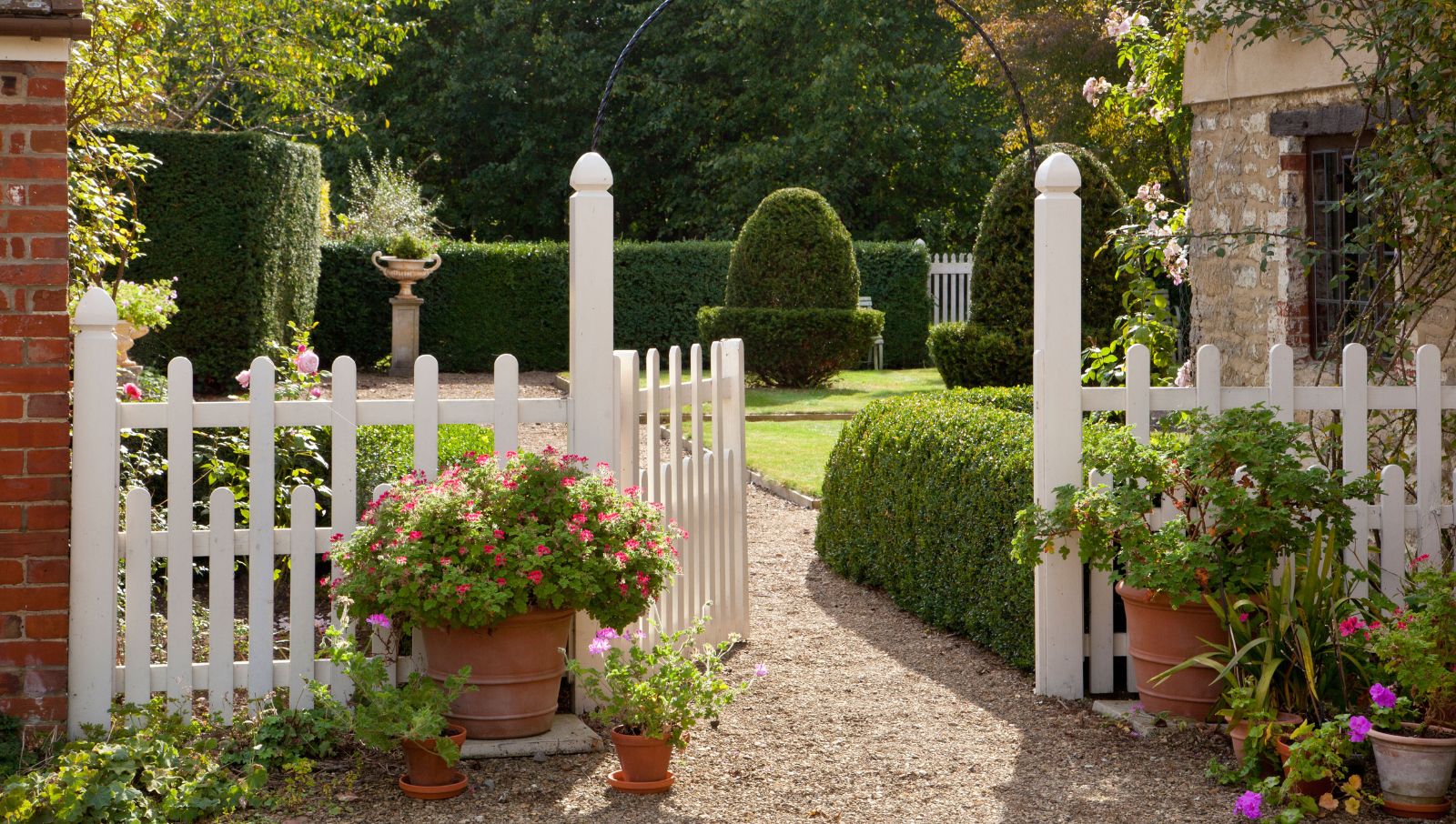How to clean a white vinyl fence – a step-by-step guide
Explore our expert cleaning tips so you can keep your white vinyl fences looking as good as new for years to come


White vinyl fences are great alternatives to wood, and in some cases, high-quality vinyl can even be crafted to resemble the tactile, textured nature of traditional wood.
Once you've learned how to install a vinyl fence, it then pays to understand how best to clean and maintain your fence – no one wants to see a dirty white fence in their yard. White vinyl fences are generally very low maintenance and won't rot or splinter like wood. You can also easily paint these types of fences – but before you get creative with a paintbrush, you need to know how to clean the fence's surface effectively.
Cleaning a white vinyl fence can seem like a big task, but with the right approach, it can be straightforward and yield fantastic results.
How do you clean a white vinyl fence?
Below is our step-by-step guide on how to effectively clean a white vinyl fence.
1. Gather your supplies
Before you start cleaning, make sure to gather all your tools and materials:
- Water hose or pressure washer, like this best-selling electric pressure washer from QVC
- Cleaning solutions, such as this outdoor cleaner from Walmart
- Soft bristle brush, like this brush from Amazon
- Rags, like these multipurpose cloths from Amazon
2. Pre-rinse the fence
Rupa Mehta, home expert at Angi, says to 'start the cleaning process by pre-rinsing the fence. Getting rid of as much dirt and grime by spraying the fence with lots of water will make things easier before you apply your cleaning solution and start scrubbing.'
Be extra vigilant in the areas of corners, crevices, and any spots with (noticeable) stains.
3. Pick your cleaning solution
If you prefer to use a homemade cleaning solution, there are a couple of good options to choose from when cleaning your white vinyl fence:
Vinegar Solution: Combine 1 cup of white vinegar and 2 gallons of water. This simple solution also works like magic for cleaning mirrors without streaks. This type of vinegar, like this white vinegar from Amazon, is ideal.
Dish Detergent Solution: Blend 2 gallons of water with a teaspoon or two of mild dish detergent, such as ECOS Dish Soap from Amazon. This combination will be enough to cut through the dirt. Detergents, along with plenty of sponge scrubbing, are a classic method for removing grime and stains.
4. Target main stains
‘First, target the stain marks that are visible on the fence by wiping them with your cleaning solution,’ says experienced gardener, Nathan Thorne. ‘Then, use a mop or brush to clean the other spots. Use a forward-and-back or circular motion as follows to clean effectively.’
For tough stains, try scrubbing gently with a soft bristle brush and concentrate on the particular area.
5. Thoroughly rinse
'Clean the fence using your electrical power washer. Secondly, run your hose and then rinse everything. Starting with the filter at the top, wash across and perpendicular to the flow, getting the dirt to accumulate downwards,' says Nathan.
'Complete the running chores for all of the sections of the fence. Rinsing of the solution prevents any trace of the clean agent and therefore makes your fence look as good as new.'
6. Avoid using harmful chemicals on the vinyl
Under no circumstances use abrasive cleaners, bleach, and solvents to clean your vinyl fence. These products can cause damage such as surface impact, color-fading, and contributing to the vinyl wearing thin.
FAQs
How do you remove mold and mildew from a vinyl fence?
If you see mold or mildew on your vinyl fence, they need to be dealt with quickly using a mildew-resistant cleaner, such as this mold and mildew stain remover from Amazon.
As we have discussed in our cleaning guide, be sure to target these main areas of grime after your initial pre-rinse.
Once clean, you must maintain your white vinyl fence through constant maintenance, ensure to schedule monthly cleanings (or whenever your fence has a build-up of dirt) to keep it looking fresh and clean.
Sign up to the Homes & Gardens newsletter
Design expertise in your inbox – from inspiring decorating ideas and beautiful celebrity homes to practical gardening advice and shopping round-ups.

Seraphina is a contributing editor at Homes & Gardens, writing Solved features on organizing and storage. She loves to decorate and also grow her own produce from her home in London. Her previous experience includes working at Women's Health and Fabulous Magazine.
-
 I thought I was over white kitchens, but Brooke Shields' cabinets reminded me why it's a truly timeless color choice
I thought I was over white kitchens, but Brooke Shields' cabinets reminded me why it's a truly timeless color choiceThe actress' cabinets pair seamlessly with a blue-painted accent wall, proving that this neutral shade is ever-versatile
By Hannah Ziegler
-
 I'm an expert vacuum tester, and no, you really don't need a mattress vacuum – here's what to use instead
I'm an expert vacuum tester, and no, you really don't need a mattress vacuum – here's what to use insteadBefore investing in a new gadget, the tried-and-true methods still work
By Dan Fauzi